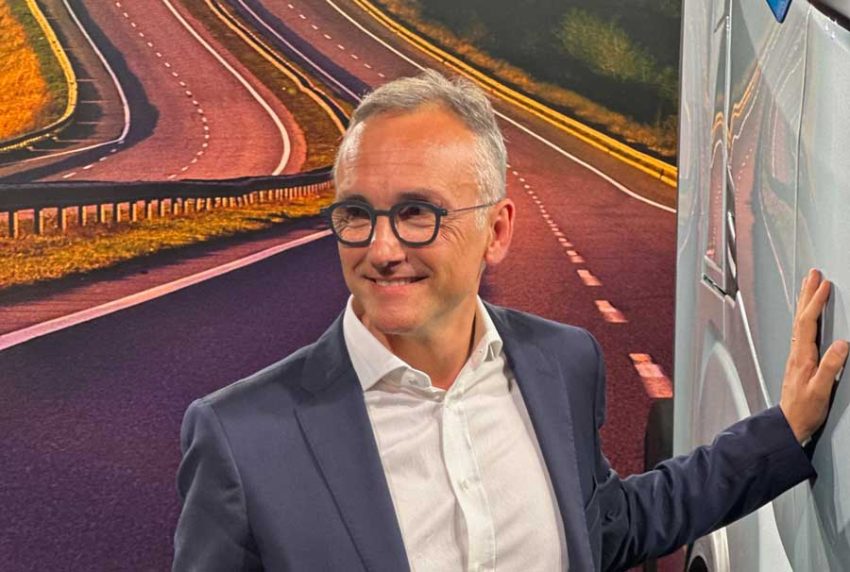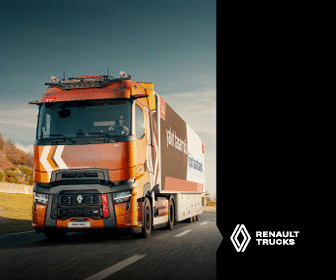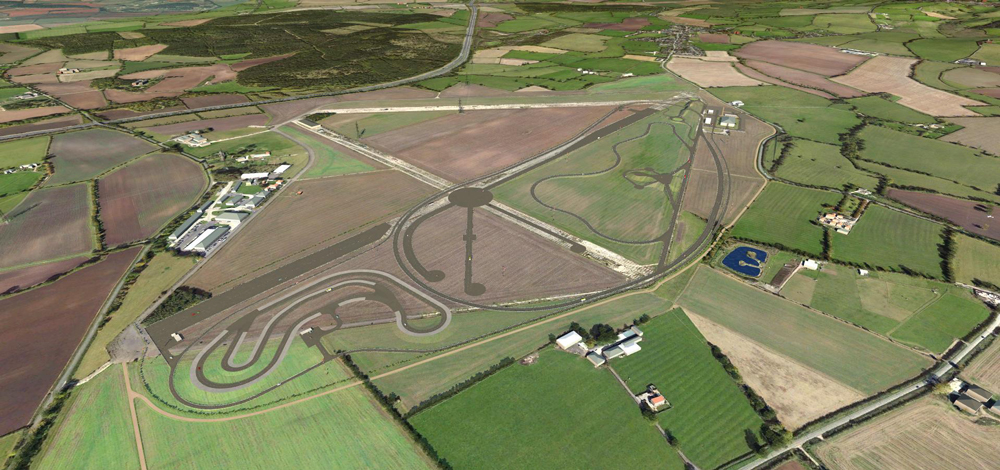Interview by Gianenrico Griffini
European Commission wants to find the solution. How do you see this strategic dialogue?
You’re starting with a very easygoing question! But I believe it’s time for questions and for replies. Personally, I don’t believe we’re going to walk away from the green path, but I do firmly believe that we need to bring a bit of mental sanity and sustainability to this transition.
Drawing the line and setting the law is one thing — being technologically ready is another. Then there’s a whole list of key elements around the portfolio: the ecosystem, the infrastructure, energy supply. So I believe we need to work together to bring sustainability — and that might mean there’s a job we can do immediately by managing the large mine with BEV units, and eventually regional distribution.
As for the transition for international haulage — yes, exactly. We believe there’s no single silver bullet. But maybe there will be a second life for the internal combustion engine through biofuels and other solutions. By the way, those are more cost-effective, more efficient, and genuinely contribute to decarbonising the world.
What about your partnership with the Turkish guys? What do you expect?
I’m fairly proud of that, because it relates to our idea of outsmarting the way we cooperate. The amount of investment required by law for the future is huge. So we looked at it like this: they sell about 25,000 trucks per year, we do more or less the same — so together that’s 50k. From a technology standpoint, it’s a way to accelerate. From a CapEx standpoint, it’s a way to decouple investment from sourcing and purchasing. It doubles your purchasing power. So by putting together all those ingredients, we thought — and we still think — it’s a smart way to cooperate.

Who is leading this project — the cab project? Who’s leading it?
It’s the truck business unit. So it’s my organisation, together with Technology and Digital.
Is it 50/50? How does it look?
I mean, if I understood your question — between Ford and Iveco, who is leading the project?
It’s cost-shared, and yes, it’s 50/50.
Will it be limited only to the cab production, or to other projects?
We haven’t applied yet to the European Commission or Parliament, but I have to say we have to go step by step. So first, body-in-white, then a future modular family — cab family, sorry. It’s an important project. Of course, we’re thinking about several different areas of cooperation: safety features, possibly electronic components. But we must first deliver this important project — and at the same time not ignore further opportunities. That’s not a political statement — there is appetite on both sides to think bigger and to keep outsmarting the way we cooperate.
So it could be a marriage in heaven?
That’s what you said — it’s your statement.
Will you have a low-entry cab? It’s very important for public tenders.
We’re going to have two steps — actually, three. If you’re referring to a sort of iconic low-entry cab, it’s not currently part of the plan. It will be fully modular — day cab, extended cab, and the super sleeper cab, which brings mobility across the project.
About the new cab — could you also go in the direction of giving more visibility, more comfort, more space for the driver? Because, for example, DAF was the first to offer a bigger cab. When you start fresh, you can really increase dimensions — something harder to do with an existing design.
Yes, we believe there are two key dimensions. First, the driver. Already today — and for a few years — we’re seeing a shortage and an ageing driver population. This is going to become more critical in years to come. Driver power is going to increase. So driver life — including gender, diversity, age — is definitely shaping our technology roadmap.
Second, vehicle aerodynamics — TCO, fuel efficiency, emissions — as seen on the Arctic. So we’re combining the two. That’s one of the key drivers behind our work.
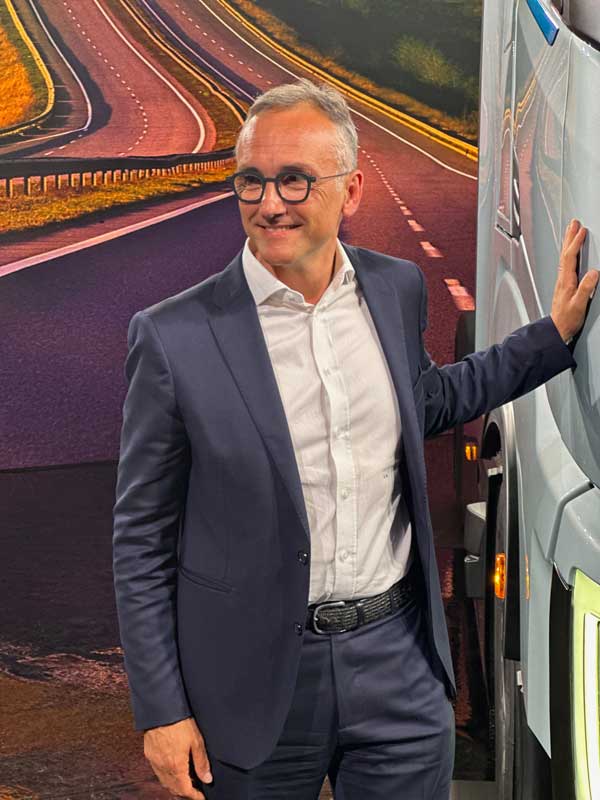
On aerodynamics — can you give figures? Compared to a standard model, how much gain do you expect? Three to four percent?
Yes, I think reaching another 3–4%, while continuing work on the internal combustion engine and mixing in different technologies like biofuels and electric — that is the medicine.
So can we imagine having this kind of cab — the aerodynamic one — on the diesel engine as well? Like Mercedes did with the Aero?
No, not really. But it’s going to be a nice-looking one — you know what I mean. Italian design applied.
You believe this new cab could be produced only by you?
No, we are going to leverage both companies’ existing footprints. The body-in-white design will be shared, but with substantial differentiation — different powertrains, different electronics. Each partner will build and assemble in their own facilities.
You have several partnerships — which ones are most important for Iveco?
You know, they’re all important. But the bigger the vehicle, the more strategic it becomes. So the heavy-duty truck partnership is key. The one with Stellantis — the eDaily, eJolly, Super Jolly — is a tactical but strategic move. It helps us stay in the light commercial segment and manage CO₂ penalties. At the same time, it lets us protect our margins.
On the subject of CO₂ penalties — Christian Levin, speaking as chairman of ACEA said OEMs face fines of €1 billion each if they miss targets by 10%. Speaking as the boss of TRATON he also said we should increase taxes on diesel. Do you support that?
I don’t know. I mean — I’m Luca, not Christian. But I believe that one of the key missing elements is TCO parity. And that’s serious stuff. You need competitive energy costs — per kWh or kg of hydrogen — and something to balance against diesel. Only then can we move forward and reach parity.
FAW were allowed to partner with dealerships in South Africa — to the detriment of your business there. Could something similar ever happen in Europe?
FAW is very strong in South Africa, yes — I remember that from my days in the Middle East and Africa. One of our strengths in Europe is that our dealer network is often mono-brand and extremely loyal — especially in Southern Europe. So I don’t see that happening here.
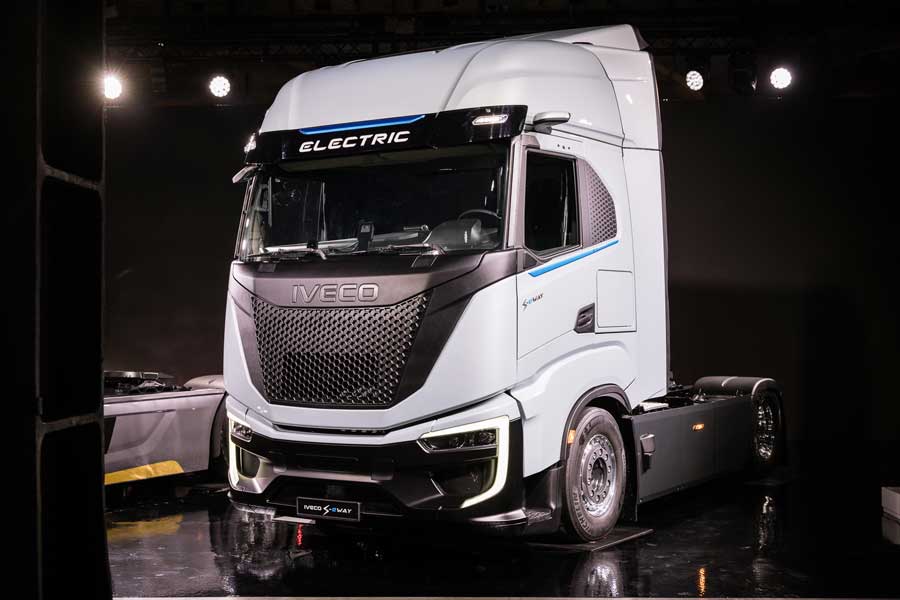
Up to now, Iveco hasn’t been a leader in electromobility. Will the new Arctic change that?
We’ve been pioneers. It’s not about being the biggest — it’s about being consistent and helping with the transition. We were first with Nikola. And if you look at our current product line, we’re still quite innovative. We’re fitting any application. Many competitors claim to be innovative, but they only sold a few dozen units last year. We sold more and plan a few hundred this year.
Is it your goal to be only electric?
No — the goal is to support the journey. We’re not obsessed with dominating the electric market. We want to maintain our technological leadership across multiple propulsion types. If you look at our lineup — diesel, natural gas, LNG, biofuel, BEV, hydrogen — it’s a unique and diverse powertrain portfolio.
How do you view the potential for a hydrogen combustion engine?
It’s intellectually interesting. From a technology standpoint, we’re ready for both: fuel cell and internal combustion using hydrogen. For long haul, I think hydrogen ICE is a serious proposal. But again — cost, supply, and 350-bar infrastructure are key. If you’re missing those, it doesn’t work — even if it’s a smart idea on paper.
You’ve already announced a hydrogen combustion engine. When will it be ready?
If I had to place a bet, I’d go with hydrogen internal combustion. Yes, you lose a little efficiency, but the technological leap is real. So that’s where I’d place my bet.
The last time we were in this room, it was to announce the Nikola partnership. Do the positives outweigh the negatives?
Definitely. It would be easy to say it wasn’t positive — but that’s not true. It was a great accelerator in terms of technology, experience, skillsets. We got what we needed. A lot of the features you see in the S-eWay and E axle were designed for the Nikola platform — things like energy management, software systems.
So the platform’s the same?
Yes — it’s version two, but the base is still the same.
So it’s fair to say that working in a software-defined world is now part of your roadmap?
Absolutely. With Marco Liccardo, our Chief Technology Officer, we see this as a platform for the future. The industry learned from the model year 2024 experience — and other issues — that you need to lead on software. That’s why we now consider it essential to have the in-house skills and capabilities to drive this transition.
Thank you very much


